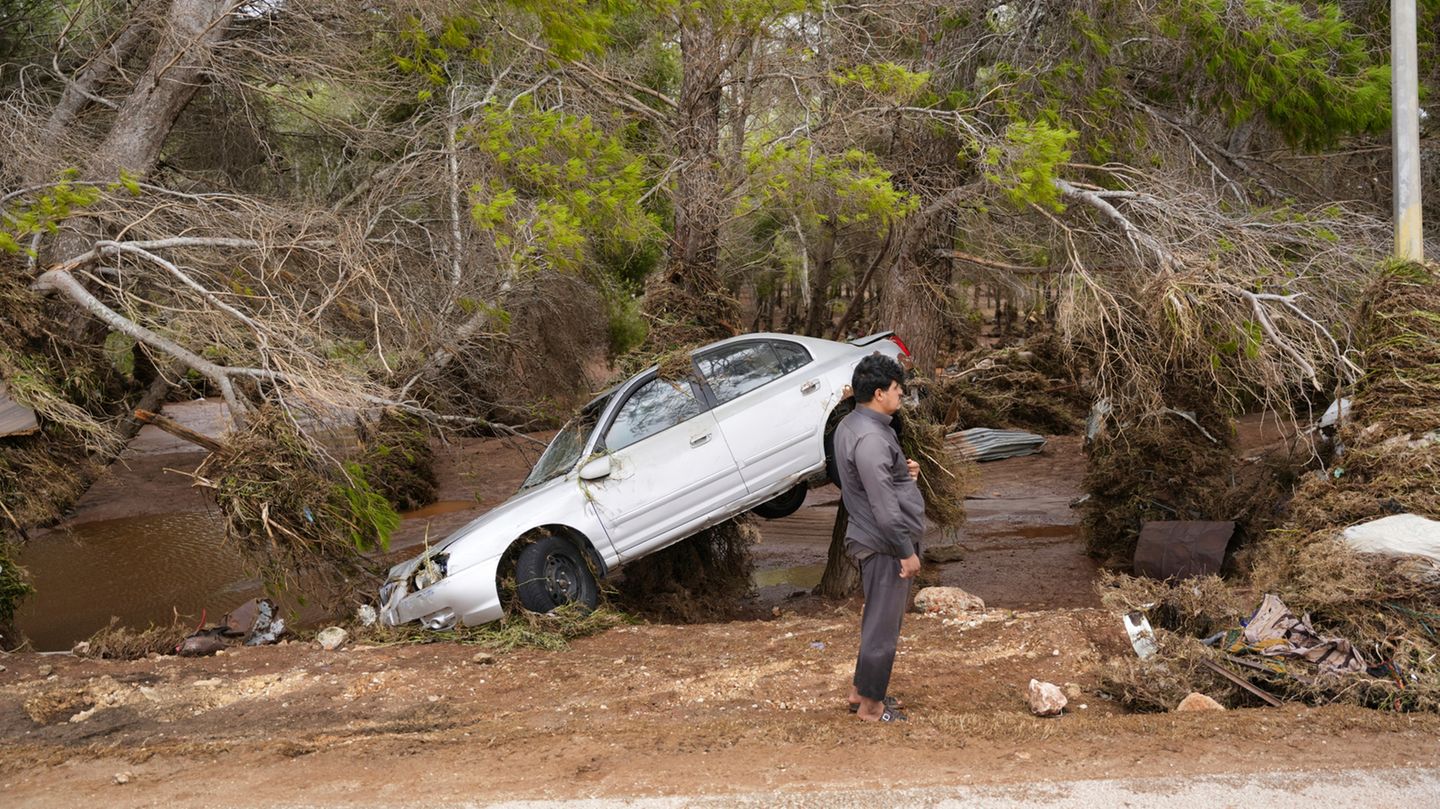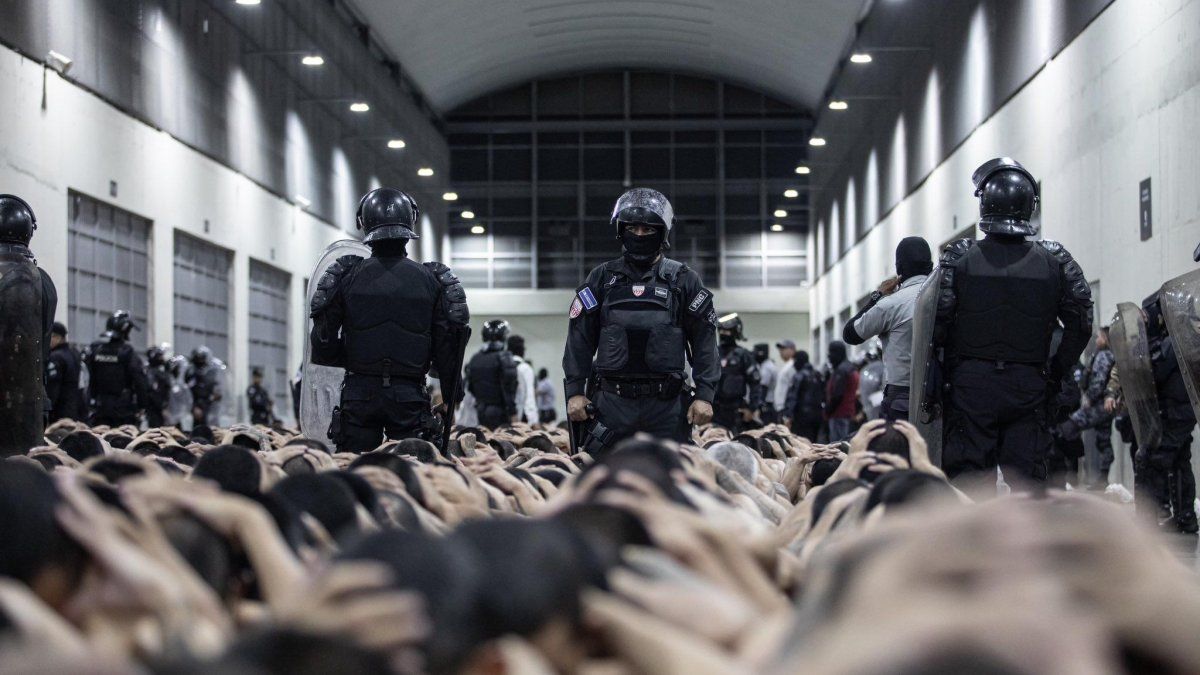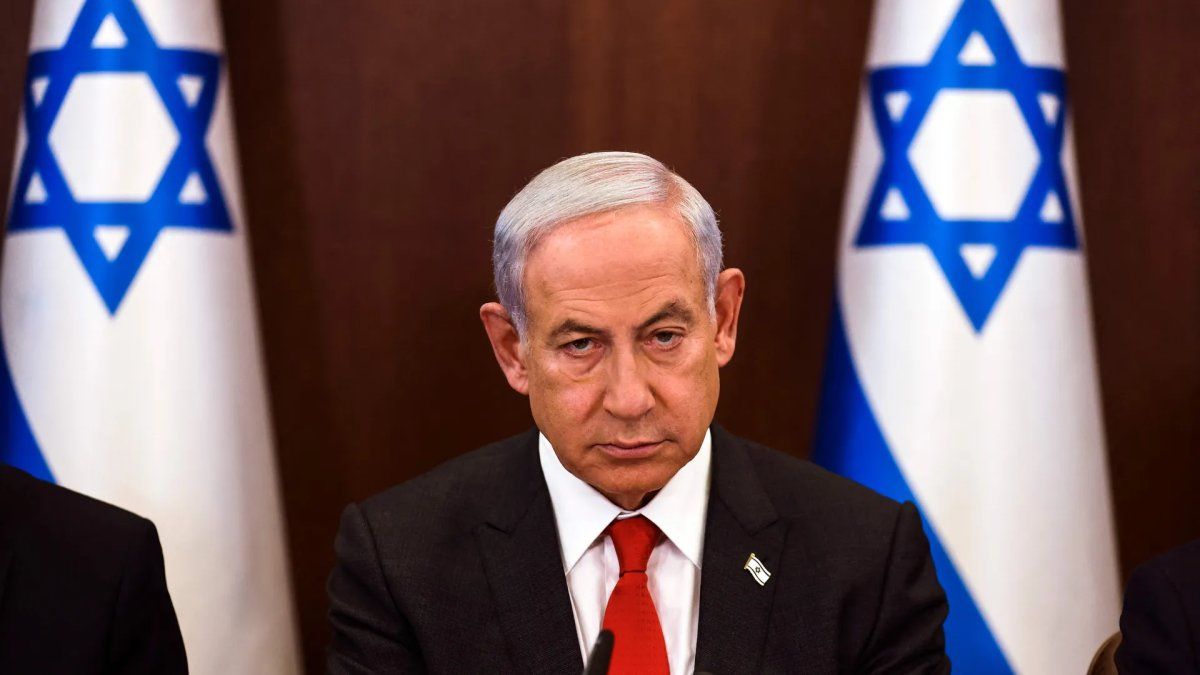Thousands of dead in Libya, desperate rescuers: Help after the flood is also so difficult because of the political situation. How is the current situation?
Entire residential areas have disappeared along Libya’s coast, swept away by the floods brought by the Mediterranean hurricane. After the storm on Sunday, the coastal towns of Darna, Jabal Al-Akhdar and the cities of Al-Marj and Susse were particularly affected. Al Bayda and the important port city of Benghazi are also affected. Residents of Darna, where dams burst, report a meter-high tidal wave. Now mass graves are being dug for the many victims.
Libya has reported 5,200 deaths so far and 10,000 people are still missing.
What is it like in the cities?
In some cities, such as Darna, a tidal wave swept away houses and cars, while in other areas the water level rose only slowly. The water levels there are high, people are trapped in their houses and rescuers can only reach them with difficulty or not at all. Reaching people in isolated places is the biggest problem for helpers.

What are rescue organizations doing on site?
Helper teams from Libya and Turkey are on site, as are Red Cross societies such as the Norwegian Red Cross, the German Red Cross and the International Committee of the Red Cross. This now primarily transports food from warehouses that are already in Libya. The Turkish Red Crescent – a partner organization of the Red Cross – is bringing emergency shelter and building materials to Libya. The German Red Cross primarily takes care of the supply of water, sanitation and hygiene. The head of the international cooperation department at the German Red Cross, Christof Johnen, said on Deutschlandfunk that the health risk is one of the greatest dangers after floods. “Be it through standing water, be it through destroyed or damaged drinking water supply pipes.”
How did the three helpers die?
Three volunteers from the Red Cross partner organization, the Libyan Red Crescent, have died during rescue operations. According to Christof Johnen, they tried to save other people and died in the floods.
What does geography have to do with the problems?
The affected area is a long coastal strip. Just behind the coastal lowlands rises a mountain plateau almost 300 kilometers long. The extreme rain clouds have fallen on this high plateau. It was the heaviest rain in Libya in more than 40 years. The rivers could not absorb the masses of water, so the water rushed down the slopes into the valley. The cities on the coastal strip were surrounded by water and the dams broke.
How does the political situation in Libya hinder aid workers?
“It is not simply a natural disaster, but an event that is very closely linked to the political situation in Libya,” said Wolfram Lacher, Libya expert at the Science and Politics Foundation on ZDF.
In Libya, two hostile governments – one based in the east, the other in the west – are currently fighting for power. As a result, there are no central authorities that can coordinate where and what help is needed. A large part of the affected area is led by an internationally unrecognized government and is under the military control of General Khalifa Haftar.
Access for the rescue organizations is also difficult because, in addition to the two large groups, there are a large number of armed troops with whom access to the areas always has to be negotiated individually. This has been a major challenge during relief operations in recent years, says Red Cross coordinator Johnen. These are all short-term measures, but they are hardly effective against the conflicts that have been going on for decades and because of which the infrastructure has been neglected. “Humanitarian aid cannot solve these long-term structural problems. Humanitarian aid cannot replace a lack of statehood, and humanitarian aid cannot replace functioning development cooperation.”
What is the political situation in Libya?
All diplomatic efforts to peacefully resolve the civil war, which continues to this day, have so far failed. The state order in the country has largely collapsed and many conflict parties are struggling for influence after long-term ruler Muammar al-Gaddafi was violently overthrown in 2011.
Libya expert Wolfram Lacher says: “Gaddafi punished the city for the fact that insurgents had taken up arms in it in the 1990s, and after Gaddafi’s fall in 2011, nothing was invested in infrastructure for years,” said . Although some money has always flowed in recent years, “but some of it went into the pockets of militia leaders and war profiteers.”
Source: Stern
I have been working in the news industry for over 6 years, first as a reporter and now as an editor. I have covered politics extensively, and my work has appeared in major newspapers and online news outlets around the world. In addition to my writing, I also contribute regularly to 24 Hours World.




